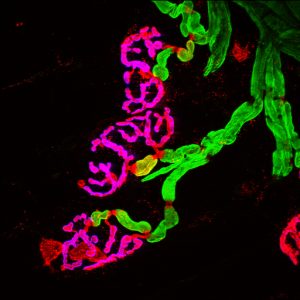Name: Constanza ‘Connie’ Cortes
Hometown: Santiago, Chile
Hobbies: Latin dancing
What do you study? I am interested in how the different organs in the body talk to each other. Did you know that your muscles talk to your liver? And to your brain?
Why is it important? We currently know very little about how these conversations take place. But if we can understand how your muscles are talking to your liver, we could develop new treatments for metabolic diseases including diabetes and obesity. Similarly, if your muscle is talking to your brain, we can treat brain diseases, including Alzheimer’s disease and age-associated dementia, by treating the muscles in your legs!
What do you like about being a scientist? When I was growing up, I really wanted to be either a detective or an astronaut. I wanted to discover new frontiers, and push the boundaries of how we understand the world. And then I realized I could do both by becoming a scientist! The best part of being a scientist is that thrill of discovery: you are stepping into unknown territory, and discovering new things all the time.


